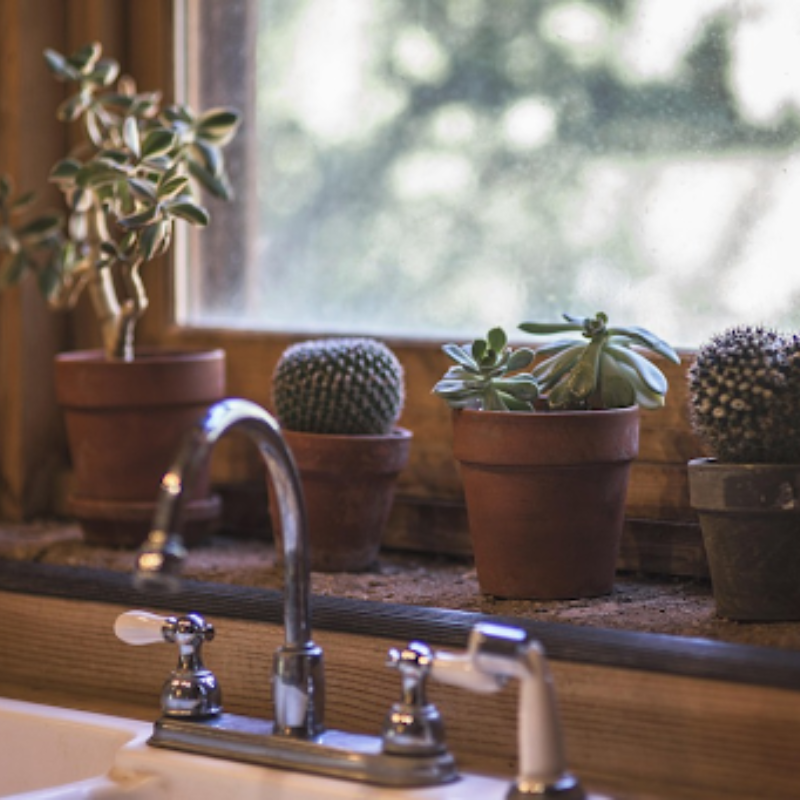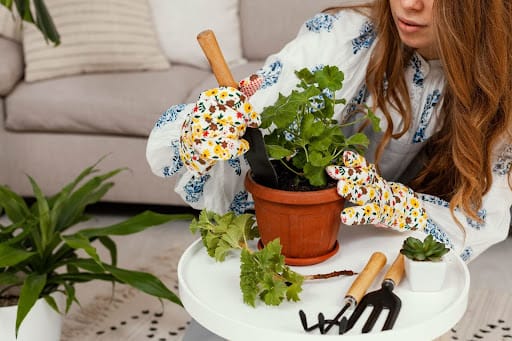|
Key Highlights
|
Did you know that some plants survive winter by making their own antifreeze? Sugar levels inside their cells rise like a survival potion, lowering the freezing point of water in their tissues. This invisible transformation is happening quietly while we complain about cold hands and frozen toes.
Plants are tougher than they look! Still, winter changes everything. Daylight shrinks, air dries out, and soil becomes either ice or mud. Growth slows so much that some plants appear asleep. And suddenly, how to take care of plants in winter becomes a thoughtful, almost delicate task.
If you have ever stared at a drooping leaf and wondered whether to water, cut, or just pray, welcome. Let us walk through how plants handle winter and what they actually need from you during these months.
Understanding How Plants Handle Cold
Plants have a strategy for almost everything winter throws their way.
Why Plants Go Dormant
Dormancy is nature’s pause button. As temperatures drop:
- Growth slows way down
- Water use decreases
- Chlorophyll breaks down in some plants
- Life force shifts from leaves to roots
This is how winter indoor plants and outdoor plants conserve resources. Dormancy can look scary. A jade plant may shed leaves. A fern may crisp at the edges. A rose bush turns into a thorny stick. But underneath, everything is quietly alive.
How Frost Damages Plants

Frost is not just cold air, but frozen water inside plant cells that causes trouble. When ice forms internally:
- Cell walls burst
- Leaves turn mushy or black
- New buds never open
- Branch tips die back
Young growth is the most vulnerable. That is why houseplant care in winter often focuses on keeping the cold from windows and preventing sudden temperature drops. Even indoors in India or other mild climates, unexpected frost can strike tender leaves.
Outdoor Plant Protection Strategies
Winter challenges outdoor plants with frost, dry wind, and unstable soil temperatures. Protecting them correctly ensures they stay alive and strong when spring returns.
Active Frost Protection
When a freeze is expected, plants need physical protection from sudden cold. These methods help maintain the warmth that naturally rises from the soil:
- Cover plants with breathable fabric such as cotton sheets, burlap, or frost cloth so that heat remains trapped around the plant.
- Secure the cover tightly at the soil level to hold ground warmth inside the protective layer.
- Remove covers in the morning once temperatures rise so the plant does not overheat or hold excess moisture.
- Avoid letting plastic touch the leaves because plastic becomes cold enough to burn plant tissue on contact.
Passive Protection Using Soil and Water
Winter plant care outdoors also depends on the soil beneath the plant. Healthy soil retains heat and moisture that roots rely on when temperatures drop.
- Water the soil thoroughly before a frost because moist soil absorbs and stores more heat than dry soil.
- Maintain proper drainage so roots do not sit in cold water, which increases the risk of root rot and frost heaving.
- Apply insulation only after the first hard freeze, because adding mulch too early may trap unnecessary warmth and encourage new, vulnerable growth.
Mulching for Root Health

Mulch acts as a natural winter blanket that guards the root zone from extreme temperature swings. A layer of about four inches of mulch made from materials like straw, shredded dry leaves, or pine needles keeps the soil insulated throughout the season. Mulch also prevents soil from expanding and contracting repeatedly, which reduces the risk of roots being pushed upward into the open air.
Taking Care of Potted Plants in Winter
Plants in containers face additional risks during cold months because their roots are surrounded by thin pot walls instead of deep earth.
Hardy Plants in Containers
Hardier container plants can remain outdoors with added insulation.
- Wrap the outside of pots with materials such as burlap or bubble wrap so the container walls retain heat.
- Group containers close together to create shared warmth and reduce exposure to cold wind.
- Move large or heavy pots against walls, under porches, or into unheated garages where temperatures remain more stable.
Bringing Tender Plants Indoors
Tropical plants, succulents, and other tender species must be moved indoors when overnight temperatures regularly fall below 50 to 55 degrees Fahrenheit.
Before bringing plants inside:
- Remove dead, damaged, or diseased leaves so the plant does not waste energy on unhealthy growth.
- Inspect all leaf surfaces and the top layer of soil carefully for insects.
- Treat plants with insecticidal soap or an appropriate pest control product that does not include fertiliser.
Indoor Plant Care During Winter

Indoor plants experience a very different version of winter compared to those left outside. Their world shrinks to the size of your home, and that means their survival depends entirely on the environment you create.
How to take care of plants in winter inside the house mainly focuses on light, temperature, humidity, and careful watering.
Managing Low Light
Winter sunlight becomes weaker and lasts fewer hours, especially for homes located indoors in India, where seasonal light shifts still affect growth.
- Place plants near south-facing or west-facing windows so they receive stronger natural light during the day.
- Use supplemental grow lights when plants stretch or grow leggy because this is a sign they are chasing light they cannot find.
- Keep some space between the leaves and cold window glass so the foliage does not suffer chilling injury at night.
Temperature and Humidity
Winter indoor plant care must counter that dryness so leaves do not crisp or develop brown edges.
- Run a humidifier near plants to increase moisture in the air around them.
- Place pots on pebble trays with water so evaporation gently raises humidity without waterlogging roots.
- Group plants close together because they naturally create a shared humid microclimate.
- Keep plants away from heating vents or drafty doorways where temperature swings cause stress.
Watering Indoors
Dormant plants use less water and nutrients because they are not actively growing. Overwatering is one of the most common reasons indoor plants die during winter.
- Water only when the top layer of soil is dry to the touch, so roots have time to breathe between watering cycles.
- Pour water directly into the soil rather than on leaves to lower the chance of fungal issues.
After a Freeze: How to Help Plants Recover
Frost damage can look alarming, but rushing to fix it can make things worse. When a plant has been exposed to freezing temperatures:
- Do not prune immediately because damaged leaves act as a temporary shield against additional cold.
- Resume normal watering only when the soil becomes dry, so roots are not overwhelmed during recovery.
- Move the pot to a bright and sheltered location where temperatures remain stable.
- Wait until spring warmth returns and new growth appears before removing dead tissue or adding fertilizer.
Final Thoughts
Now that you understand how to take care of plants in winter, you can help every leaf and root transition into spring with strength. And if one of your favourites did not make it this season, that is simply part of the plant parent journey. Some plants rest, some resist, and some teach us that we are ready for a sturdier companion.
If you are looking to refresh your space or begin again, explore durable varieties that thrive as winter indoor plants. You can always find healthy, well-grown options from us that are prepared for the season ahead.
FAQs
1. Should we water plants daily in winter?
No. Daily watering causes root rot. Only water when the soil feels dry about an inch below the surface.
2. How to bring a plant back to life after freezing?
Leave damaged leaves in place at first, provide moderate watering, give bright light with protection from additional cold, and wait until spring before pruning or feeding.
3. Can plants regrow after being frozen?
Yes, if the roots and growing crown remain alive. It may take until spring for new growth to show.
4. What happens if you do not remove dead leaves?
If leaves are diseased, the infection may spread. If fallen leaves are healthy and left in garden beds outdoors, they provide helpful insulation and nutrients.
5. Do I feed houseplants fertilisers in winter?
No. Their growth slows down, and fertiliser can burn dormant roots.
6. What should I spray on my plants before I bring them inside for the winter?
Use insecticidal soap or a systemic pest control solution that does not include fertiliser, so pests do not enter your home with the plant.


